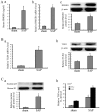TLR4-mediated NF-κB signaling pathway mediates HMGB1-induced pancreatic injury in mice with severe acute pancreatitis
- PMID: 26719855
- PMCID: PMC4687439
- DOI: 10.3892/ijmm.2015.2410
TLR4-mediated NF-κB signaling pathway mediates HMGB1-induced pancreatic injury in mice with severe acute pancreatitis
Erratum in
-
[Corrigendum] TLR4-mediated NF-κB signaling pathway mediates HMGB1-induced pancreatic injury in mice with severe acute pancreatitis.Int J Mol Med. 2016 Oct;38(4):1313. doi: 10.3892/ijmm.2016.2707. Epub 2016 Aug 17. Int J Mol Med. 2016. PMID: 27573568 Free PMC article.
Abstract
Severe acute pancreatitis (SAP) is an extremely dangerous acute abdominal disorder which causes multiple complications and has a high mortality rate. Previous research has suggested that high-mobility group box 1 (HMGB1) plays an important role in the pathogenesis of SAP; however, the mechanisms underlying this strong correlation remain unclear. In this study, to further investigate whether HMGB1 acts as a stimulating factor, and whether Toll-like receptor 4 (TLR4) acts as its major mediator in the development of pancreatic injury during SAP, recombinant human HMGB1 (rhHMGB1) and TLR4-deficient mice were used. We found that HMGB1 and TLR4 were highly expressed, and nuclear factor-κB (NF-κB) was activated in our mouse model of SAP. We noted that the rhHMGB1 pancreas-targeted injection activated the TLR4-mediated NF-κB signaling pathway and induced pancreatic injury in wild-type mice. In TLR4-deficient mice, the rhHMGB1-induced activation of NF-κB and pathological changes in the pancreas were less evident than in wild-type mice. Therefore, this study provides evidence that HMGB1 promotes the pathogenesis of pancreatitis, and its downstream TLR4-mediated NF-κB signaling pathway is a potential important mediator in the development of this form of pancreatic injury.
Figures





References
-
- Ding SQ, Li Y, Zhou ZG, Wang C, Zhan L, Zhou B. Toll-like receptor 4-mediated apoptosis of pancreatic cells in cerulein-induced acute pancreatitis in mice. Hepatobiliary Pancreat Dis Int. 2010;9:645–650. - PubMed
Publication types
MeSH terms
Substances
LinkOut - more resources
Full Text Sources
Other Literature Sources
Medical
Miscellaneous

